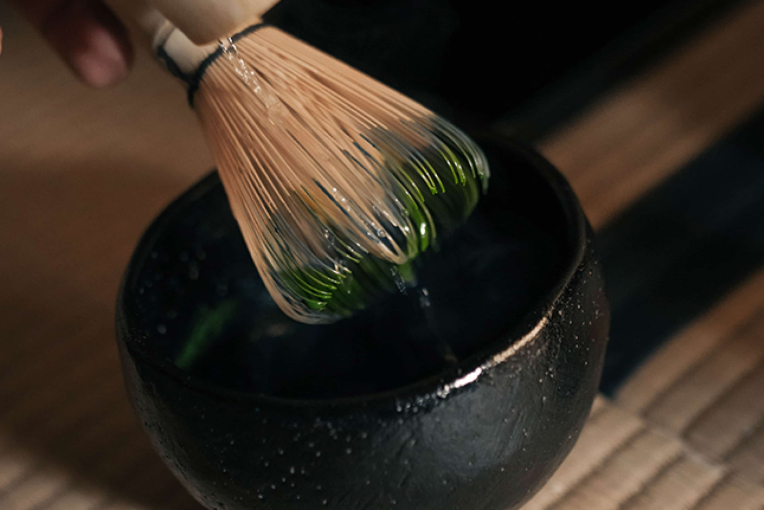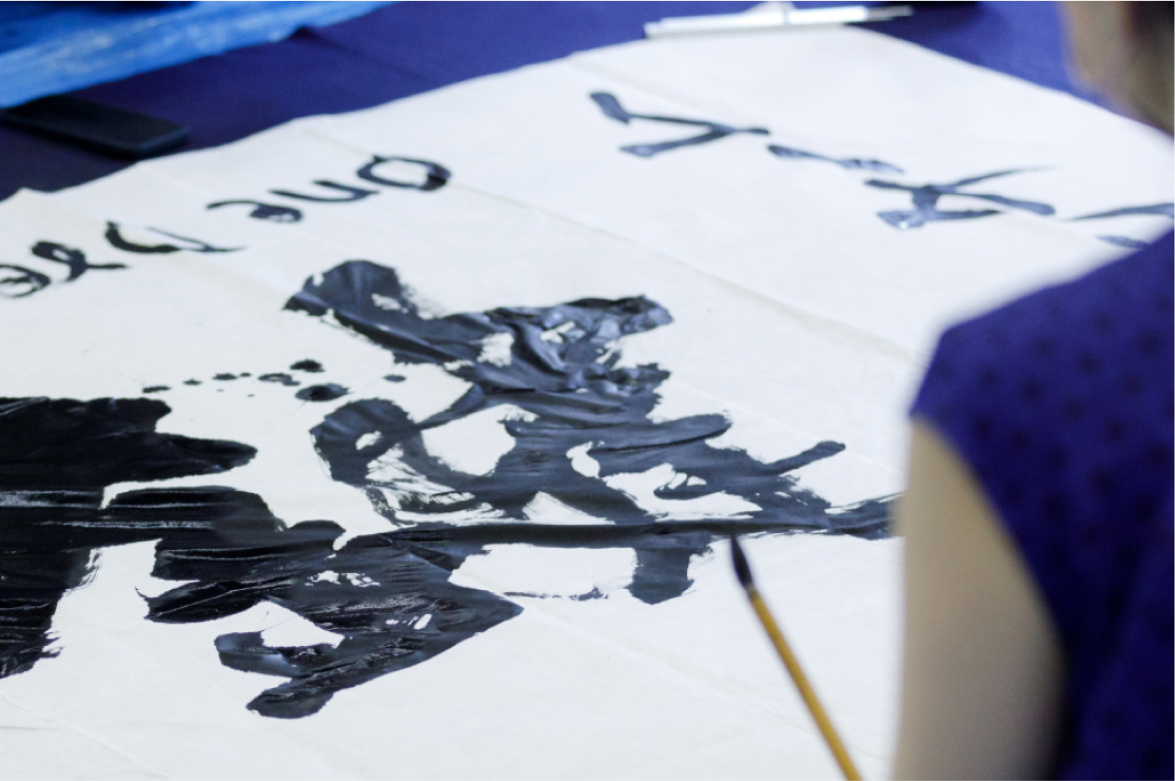An Introduction to Sado: Japanese Tea Ceremony
Before you attend a tea ceremony yourself, let’s look at the basics of this traditional practice.
What is Sado?
Sado is the Japanese tea ceremony, also known as cha-no-yu or chado, the Way of Tea. It is a traditional and highly ritualized way of serving and drinking green matcha tea, involving a host and one or more guests. With a code that prescribes everything from the room decor to the topics of conversation, sado is an art that takes a lifetime to master, though its graces can be appreciated by anyone.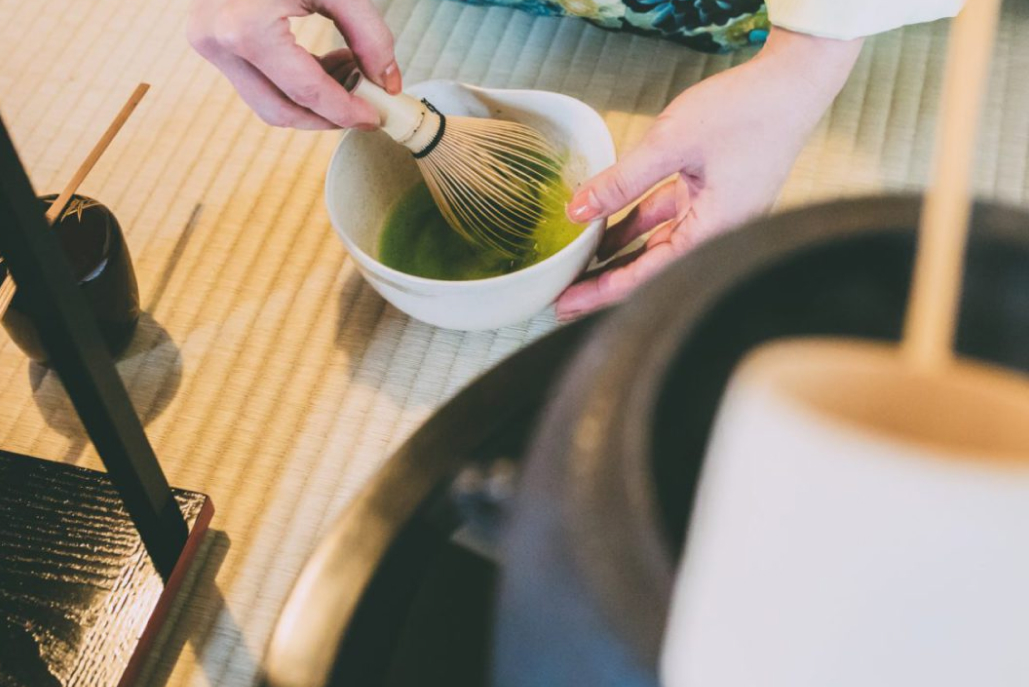
The History of Japanese Tea Ceremony
Tea was introduced to Japan from China in the 9th century by the Buddhist monks Kukai and Saicho. It was originally used mainly as a medicine, but came to be associated with Zen Buddhism after the monk Eisai’s journey to China in the 12th century.
Tea was thus a religious drink, and tea ceremony a religious ceremony, for the first few centuries of its history in Japan. As Buddhism spread to the Japanese aristocracy, it took tea culture with it, and tea ceremonies became a pastime in the Imperial court of the Heian Period (794–1185). One game, called Tocha (“fighting tea”) even involved players competing to correctly identify different varieties of tea.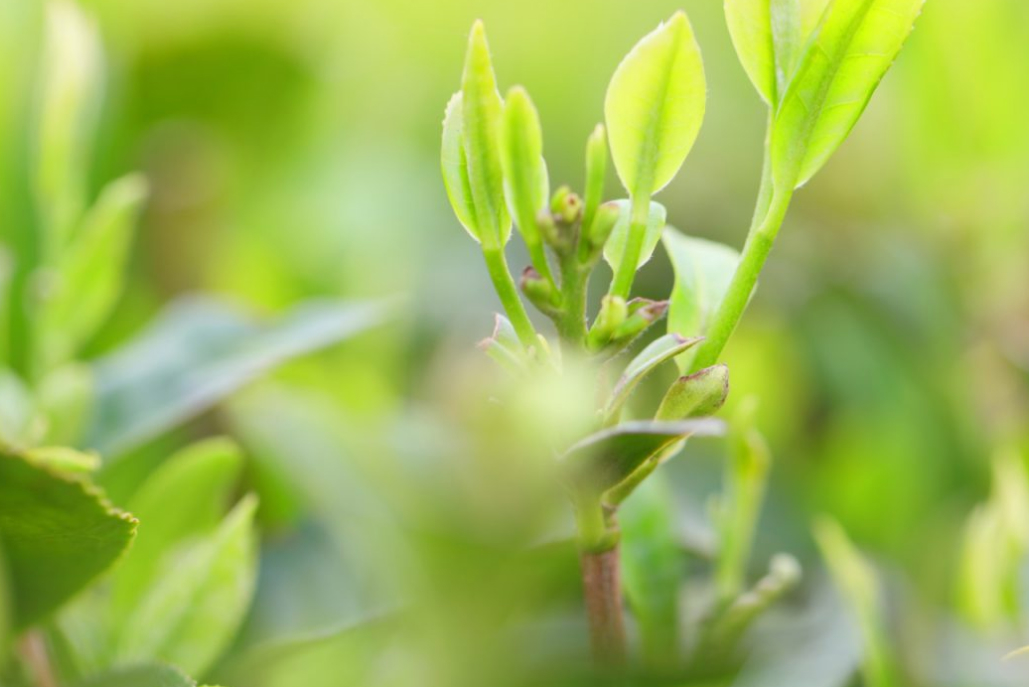
It was a man from the merchant class, however, who created sado as we know it today. Sen-no-Rikyu was the tea master of Toyotomi Hideyoshi, who unified Japan in the late 16th century. He created a tea ceremony based on wabi-sabi principals, which valued simplicity, humility, and imperfection.
With this, and the rise of the merchant class, tea ceremony spread from the upper echelons of Japanese society to the wider population. It also became a common part of general education for Japanese women – this is still reflected today in the abundance of female masters. Nowadays, sado is known and practiced around the world as an iconic Japanese art.
Sado Tools
While the specific tools used in each tea ceremony will vary depending on the host and their school, certain items are common to nearly all traditions.
- Chawan (tea bowl) — A ceramic bowl large enough to be held with two hands. Usually a decoration or picture marks the front of the bowl.
- Chasen (tea whisk) — A short-handled whisk made of bamboo, used to combine powdered matcha with hot water in the tea bowl.
- Chashaku (ladle) — A small bamboo ladle used to scoop the tea powder from its container.
- Mizusashi (water jar) — Holds fresh water to mix with boiling water and to wash the tea bowl.
- Kama (kettle):An ironware kettle used to boil water.
- Fukusa (tea cloth):Used to clean the other tools.
- Natsume (tea container):Usually made of lacquerware, this small box holds the matcha tea powder.
Room decor
Room decor forms a part of the tea ceremony, and is overseen by the host. The three main elements are:
- Kakejiku,a hangingscroll displaying calligraphy or artwork
- Kabin, a vase which holds an ikebana flower arrangement
- ogo, an incense container

How to Perform a Japanese Tea Ceremony
Many tea masters are also highly skilled in calligraphy, ikebana, or incense appreciation as a result of this connection.
1. Prepare the tools
The host first cleans all the tools and utensils with the fukusa.
2. Make the tea
After cleaning everything, the host brings the water to the boil. After spooning a little matcha powder into the chawan, they whisk it together with the hot water until small bubbles appear.
3. Serve sweets
Wagashi sweets are served before the tea, usually with a small skewer on a piece of paper. Most wagashi are very sweet and made from compressed sugar.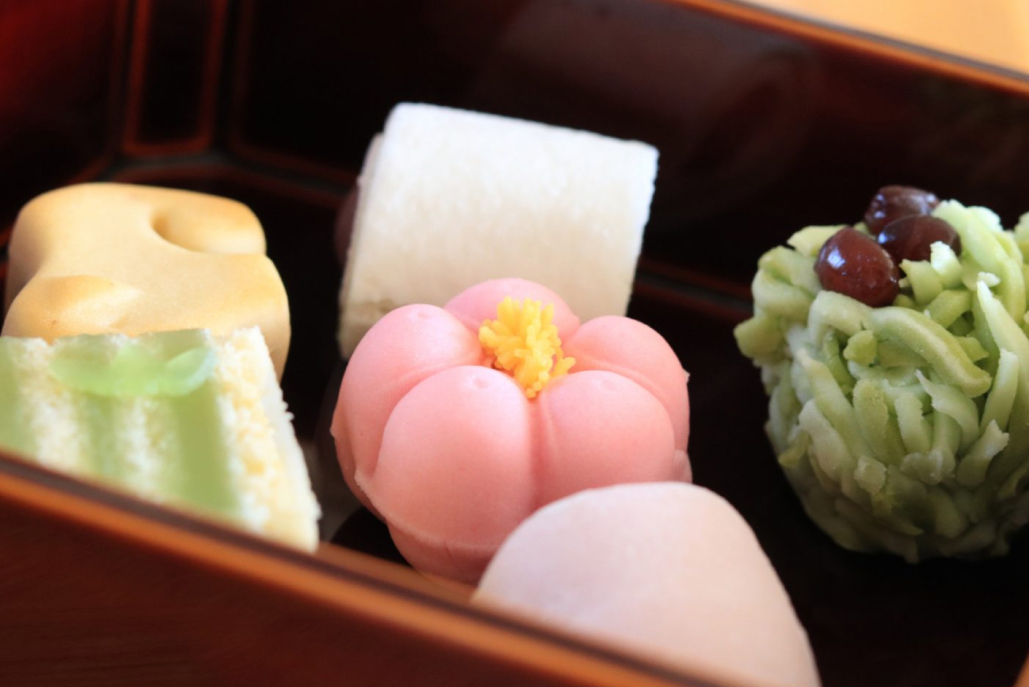
Serve the tea
Finally, the host offers the tea to the most senior guest first. The bowl is then passed down in order of seniority.
How to Drink Tea
This, too, can differ depending on the school. The basic steps for most instances are as follows:
1. Bow to the host to show your appreciation
2. Say “osakini” (“I will go first”) to the other guest(s)
3. Take the tea bowl with your right hand and put it in your left hand
4. Admire at the tea bowl and lift it to eye level
5. Rotate the tea bowl clockwise twice
6. Drink the tea audibly
7. Using your thumb and index finger, wipe clean the part of the tea bowl that touched your lips
8. Rotate the tea bowl clockwise twice again
9. Put the tea bowl on the tatami mat with your right hand
Benefits of Japanese Tea Ceremony
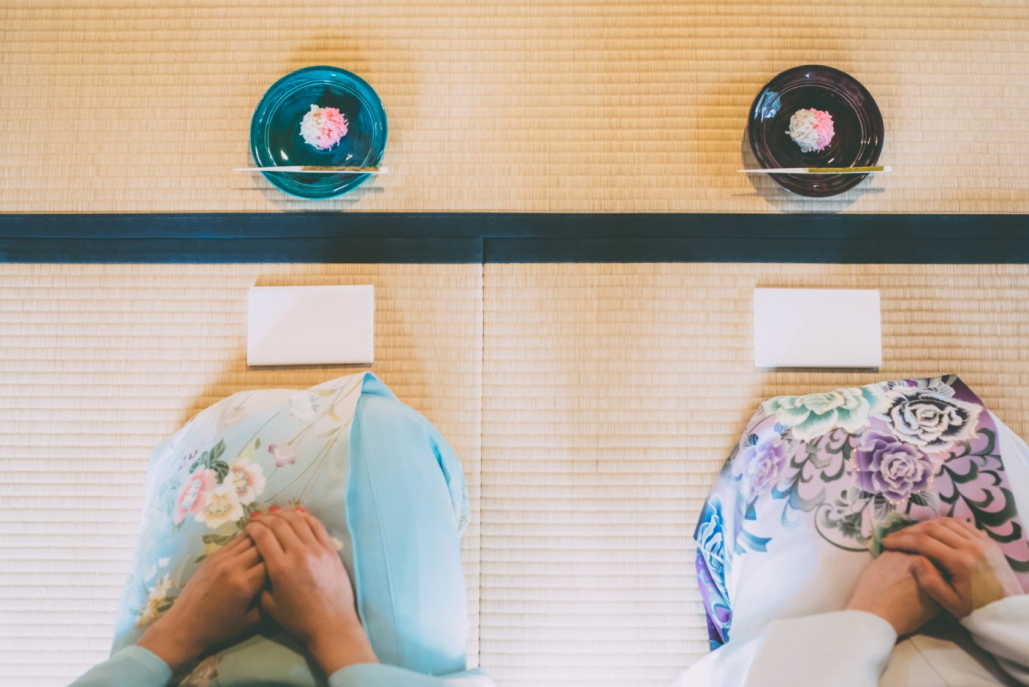
Sado isn’t just a way to try delicious tea and sweets. Practicing tea ceremony can also train you in mindfulness, etiquette, and sensitivity. And of course, tea is considered to have a wide range of health benefits.
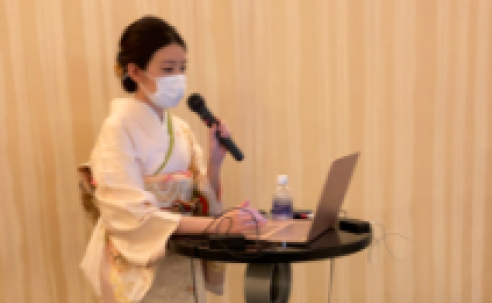
A teacher explaining fluently in English.
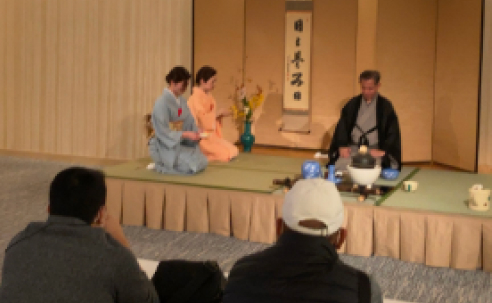
Recreating an authentic tea room by laying tatami mats on the stage, and decorating with hanging scrolls and flowers.
With Wabunka Experiences, you can experience sado with professors from some of the oldest schools in Japan, performed in traditional shrines, temples, and Japanese gardens. Book your experience today.
Our dedicated coordinators will propose the best cultural experiences for you, customized to your needs.
